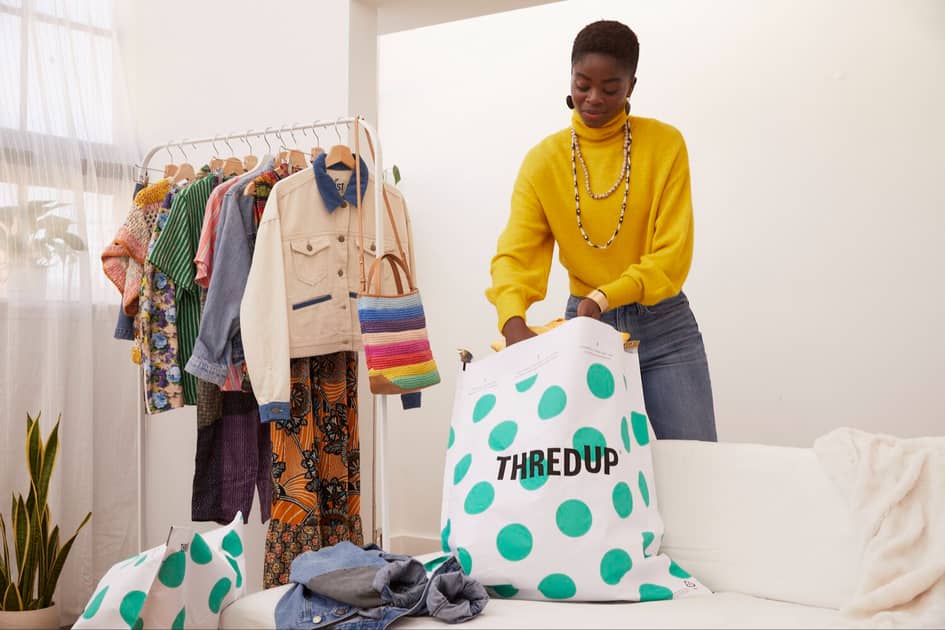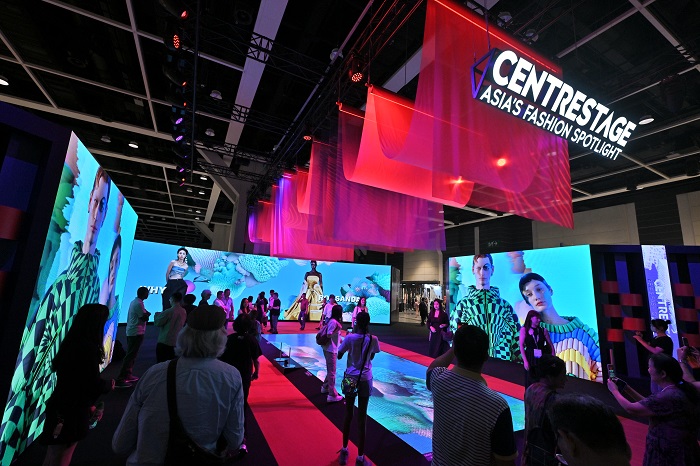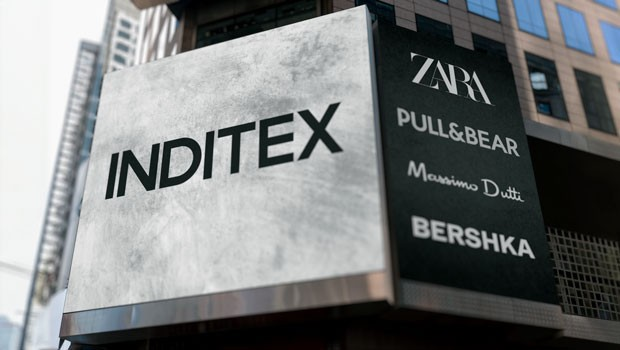FW

The highly anticipated CENTRESTAGE fashion event opened its doors today at the Hong Kong Convention and Exhibition Centre, bringing together a vibrant showcase of Asian fashion talent and creativity. This four-day extravaganza, running from September 4th to 7th, is set to captivate fashion enthusiasts and industry professionals alike with a diverse array of activities and events.
A Fashion Extravaganza
CENTRESTAGE boasts an impressive lineup of over 200 fashion brands from across Asia, offering a unique platform for designers to showcase their latest collections and connect with global buyers. The event is divided into four distinct zones:
• Fashion Runway: Take center stage with daily runway shows featuring established and emerging designers, showcasing their diverse styles and trends.
• Designer Gallery: Explore a curated selection of designer booths, where you can discover unique pieces and connect directly with the creators.
• Accessories Zone: Find the perfect finishing touches for your wardrobe with a wide range of accessories, from statement jewelry to stylish bags. • Fashion Forum: Gain valuable insights from industry experts and thought leaders through seminars, workshops, and panel discussions covering topics such as sustainable fashion and emerging trends.
Highlights of the CENTRESTAGE Event
In addition to the main exhibition, CENTRESTAGE has organized a series of exciting events and activities to enhance the experience for visitors:
• Fashion Talks: Engaging discussions with renowned fashion designers, stylists, and influencers who will share their insights on the industry and their creative processes.
• Fashion Demonstrations: Live fashion demonstrations showcasing the latest styling techniques and trends.
• Fashion Contests: For aspiring designers can participate in exciting fashion contests and compete for prestigious awards.
• Networking Opportunities: To connect with industry professionals, buyers, and media representatives to build valuable relationships and explore new business opportunities.
CENTRESTAGE's Impact on the Fashion Industry
CENTRESTAGE plays a crucial role in promoting the growth and development of the Asian fashion industry. By providing a platform for designers to showcase their work to a global audience, the event helps to elevate the region's fashion scene and foster international collaborations.
Hong Kong's annual fashion extravaganza, CENTRESTAGE, kicked off today at the Hong Kong Convention and Exhibition Centre (HKCEC). This year's event marks a significant milestone as it welcomes both industry buyers and the general public free of charge for all four days (September 4-7).
A Feast for Fashion Enthusiasts
Over 250 brands from 18 countries and regions are showcasing their latest collections, including prestigious labels like Robert Wun, ROKSANDA, and BLVCK PARIS. New zones dedicated to Athleisure and Circular Fashion reflect current trends in sportswear and sustainability.
A Platform for Local and International Talent
Fashion shows are a major highlight, featuring established designers and rising stars. Tonight's Fashion Hong Kong Runway Show will blend fashion and film, while the Hong Kong Young Fashion Designers' Contest (YDC) on September 7th will see the next generation compete for top honors.
Industry Insights and Interactive Experiences
Beyond the runway, CENTRESTAGE offers seminars and sharing sessions with industry leaders like British designer RoksandaIlinčić. Visitors can also try their hand at AI-powered virtual try-on experiences and redeem limited-edition fragrances and designer toy figures.
Fusing Fashion and Technology
A special fencing game in the Athleisure zone allows visitors to experience the thrill of the sport while showcasing virtual outfits. This interactive experience reflects CENTRESTAGE's commitment to innovation and technology.
CENTRESTAGE marks a must-visit event for anyone interested in fashion, design, and the future of the industry. With its free entry and diverse offerings, it promises to be an exciting experience for all.
David Buzzoni, Director-Global PR & VIP, Loro Piana, the textile and ready-to-wear label of LVMH, has been as appointed as new Director of Global Communications at Gucci.
Buzzoni will report to Alessio Vannetti, Executive Vice-President and Brand Director, Gucci. He will be responsible for the brand’s press service activities across the world andits corporate communications, ensuring a coherent message that is aligned with Gucci's values and vision.
Prior to joining Loro Piana in 2018, Buzzoni was engaged as the Global Editorial Manager at Moncler. A graduate in communication sciences from Milan's Statale University, he has also been employed at Burberry and Prada.
At Gucci, he succeeds Benjamin Cercio, who quit from the company in March 2023 after fifteen years of service at Louis Vuitton. Cercio joined Gucci at the end of 2022 as Director of Global Communications, a title that was later expanded to ‘Senior Vice-President in charge of Global Communications.’
Meanwhile, Stefano Cantino, Senior Vice President-Communications and Events, Louis Vuitton has been appointed as the new Deputy Managing Director at Gucci. He will be responsible for assisting Jean-Francois Palus, CEO, who has been running the company for a year.
In 2023, Gucci also appointed Sabato De Saron as the brand’s creative director replacing Alessandro Michele.
As the company embarks on its next phase of growth, driven by strategic investments and modernisation, KPR Mills is poised to continue playing a pivotal role in India’s textile sector while also contributing to economic growth and environmental stewardship.
Since its inception in 1984, KPR Group has evolved into a dynamic conglomerate, diversifying its operations across various sectors including Textiles, Sugar, Ethanol, Renewable Energy, Education, and Automobiles. Upholding its commitment to quality, KPR Mills has consistently embraced innovation, sustainability, and excellence, making it a key player in the Indian textile industry. As the company reflects on its performance in FY24, it also sets its sights on strategic growth and expansion, poised to elevate its standing in the industry.
KPR Mills has built a solid foundation, underpinned by strong organisational structure, people competencies, and robust systems and processes. The company’s unique culture, focusing on honesty, integrity, and hard work, continues to drive its sustained growth even during challenging times.
Recognising the significance of continuous innovation, KPR is undertaking significant expansion initiatives. The company has established an exclusive vortex spinning mill at Sathya mangalam with an investment of Rs 100 crore to capitalise on the growing demand for high-quality yarn. This state-of-the-art facility is designed to produce yarn at greater speed, with low maintenance costs and fully automated processing, enhancing the company’s competitive edge.
As a commitment to sustainability, KPR Mills has further expanded its renewable energy portfolio by investing Rs 100 crore in a rooftop solar power plant. This investment has enhanced the company’s solar power capacity to 37 MW, reinforcing its leadership in green energy and reducing its carbon footprint.
To further improve quality and productivity, KPR Mills has modernised its spinning division with an outlay of Rs 150 crore. This initiative is expected to enhance operational efficiency, ensuring that the company remains at the forefront of the textile industry.
Valued at $618 million in 2023, the luxury pre-owned market in India is projected to grow at a CAGR of 10 per cent to reach approximately $1,556 million by 2032. This substantial growth underscores the rising demand for pre-owned luxury goods across categories such as jewelry, fashion, art, etc according to Almona Bhatia, Chief Business Development Officer, Tata CLiQ & Tata CLiQ Luxury.
Several factors contribute to the rise of the luxury pre-owned market. A growing awareness of sustainability is prompting consumers to embrace circular fashion, with pre-owned luxury items offering a way to reduce environmental impact while still enjoying high-end products. Pre-owned luxury goods also appeal due to their unique charm, often providing access to rare, discontinued, or vintage pieces that are no longer available in the primary market.
India’s luxury pre-owned market is primarily driven by affluent households with annual incomes exceeding Rs 20 lakh. Categorised as Elite and Elite Plus, these households are prevalent in metro, Tier I, and Tier II/III cities, with the top 20 cities accounting for about 60 per cent of such households. The growing number of affluent consumers is a key factor in the market’s expansion with their numbers expected to rise from 60 million in 2023 to 100 million by 2027.
Gen Z consumers are also playing a significant role in this growth. Known for their digital savviness and strong commitment to sustainability and ethical consumption, Gen Z shoppers are increasingly turning to the luxury pre-owned market to find unique, high-quality items that align with their values. The COVID-19 pandemic has accelerated the shift to online shopping, further boosting the luxury pre-owned market.
However, the market continues to face certain challenges, particularly around building consumer trust. Concerns about authenticity, quality, and transparency can deter potential buyers from purchasing pre-owned items. To address these issues, platforms like Tata CLiQ Luxury are implementing stringent quality checks, certification processes, and providing detailed product information to reassure consumers.
Another challenge is changing consumer perceptions, especially in a culture where newness is often associated with prestige. However, with more consumers recognising the environmental and economic benefits of pre-owned luxury, consumers’ attitudes are gradually shifting.
The luxury pre-owned market in India is poised for significant growth, driven by increasing affluence, a rising Gen Z consumer base, and a growing emphasis on sustainability. As platforms like Tata CLiQ Luxury continue to expand their offerings and build consumer trust, the market is expected to thrive in the coming years, adds Bhatia.

In a surprising turn of events, online secondhand fashion giant ThredUp has announced its decision to exit the European market. This comes as a shock to many, considering the rising popularity of sustainable fashion and the thriving secondhand market in Europe. The question on everyone's minds is: Why?
ThredUp's CEO James Reinhart attributed the exit to several factors, primarily the company's inability to achieve profitability in Europe. The European operations have consistently struggled, even with substantial investment and support from the US team. Q2 2024 saw an 18 per cent drop in European revenue, coupled with a negative adjusted EBITDA margin, signalling a challenging business environment.
Is Europe not ready for a secondhand platform?
The short answer is no. The secondhand clothing market in Europe is booming. Consumers are increasingly embracing sustainable fashion choices and seeking affordable alternatives to fast fashion. However, the market dynamics in Europe differ significantly from those in the US, posing unique challenges for ThredUp.
Some of the major challenges include:
Strong competition: Europe has a robust network of local secondhand stores and online platforms. ThredUp faced intense competition from established players, making it difficult to gain a significant market share. Also while the US has embraced secondhand shopping as a trendy and sustainable option, European consumers have been slower to adopt this mindset. Thrifting is often still associated with necessity rather than choice.
Cultural differences: Europeans have distinct shopping habits and preferences. ThredUp's US-centric model might not have fully resonated with the European audience.
Logistics and infrastructure: The fragmented nature of the European market, with its diverse languages and regulations, posed logistical challenges for ThredUp which they may have underestimated.
Table: Comparison of secondhand clothing markets US vs Europe
|
Market |
Market Size (2023) |
CAGR (2023-2028) |
Projected market size (2028) |
Key growth drivers |
Challenges |
|
US |
$30 billion |
12.50% |
$51 billion |
Sustainability concerns, growing acceptance of secondhand, strong online presence |
Price sensitivity, competition from fast fashion |
|
Europe |
$25 billion |
10% |
$40 billion |
Increasing environmental awareness, rising disposable incomes, growth of online resale platforms |
Cultural barriers, logistical complexities, fragmented market |
As the table shows, the European secondhand market is substantial and growing at a healthy pace. The increasing focus on sustainability, coupled with the convenience of online platforms, is driving this growth. However, cultural barriers and logistical complexities remain challenges that businesses need to address.
Key takeaways
• ThredUp's exit highlights the complexities of expanding a successful US-based business model into the European market.
• Despite the setback, the secondhand clothing market in Europe remains promising, driven by increasing consumer awareness about sustainability and the desire for affordable fashion.
• Local players with a deeper understanding of the European market and its unique challenges are likely to thrive.
While ThredUp's departure is a setback, it's not the end of the road for secondhand fashion in Europe. The market is ripe with opportunities for innovative platforms that can adapt to local preferences and navigate the unique challenges. As consumers continue to prioritize sustainability and affordability, the secondhand clothing market in Europe is poised for significant growth in the coming years.

The recently released Cotton Incorporated 2024 Lifestyle Monitor underscores a growing consumer preference for comfortable, sustainable clothing choices. The findings highlight a dynamic shift in consumer attitudes and behaviors towardsa apparel purchasing, significantly impacting the textile and fashion industry.
Comfort, sustainability top reason popularity
The report indicates a marked increase in consumer prioritization of comfort when selecting clothing. A significant 85 per cent of respondents indicated comfort as a key factor influencing their apparel purchases. This trend is particularly evident among younger consumers, suggesting a generational shift in fashion preferences.
Additionally, the 2024 Lifestyle Monitor shows increasing consumer awareness and concern for environmental sustainability. Over 60 per cent respondents expressed a preference for clothing made from natural fibers, citing environmental impact as a primary reason. This growing eco-consciousness among consumers is further reflected in the report's findings on shopping habits, with nearly half of all consumers actively seeking information about the sustainability of their apparel choices.
"The results of our survey clearly show that sustainability is becoming a key factor in consumers' decision-making process," said Kim Kitchings, Senior Vice President of Consumer Marketing at Cotton Incorporated. “Brands that can effectively communicate their commitment to sustainable practices will likely gain a competitive advantage in the marketplace."
The survey also shed light on specific aspects of sustainability that are particularly important to consumers. For example, 65 per cent respondents expressed concern about the use of harmful chemicals in clothing production, while 55 per cent were worried about the amount of water used in the manufacturing process. When asked about preferred sustainable materials, cotton emerged as a top choice, with 70 per cent of consumers considering it to be a sustainable fiber. This preference for natural fibers over synthetic alternatives highlights the growing demand for eco-friendly materials.
These study’s findings point towards a future where consumer choices are increasingly driven by a desire for both personal well-being and environmental responsibility. This evolving landscape presents both challenges and opportunities for the textile and fashion industry, necessitating a greater focus on sustainable practices and the development of comfortable, eco-friendly clothing options.
Cotton prices in Brazil dropped below BRL 4 (approximately $0.71) per pound by the end of August this year as availability increased in the domestic market while prices in the international market declined.
On Aug 25, the National Supply Company (CONAB) had completed cotton harvesting in 76.1 per cent of the total area harvested nationwide. Favorable dry and warm weather conditions supported harvesting activities in Mato Grosso, Brazil's largest cotton-producing state, according to the latest bi-weekly report by CEPEA.
However, Brazil’s cotton exports declined by 53.5 per cent to 77.7,000 tons in August 2024 as compared to the 167.2,000 tons exported in August 2023. Despite this, the daily export average slightly increased by 0.77 per cent to 4.57,000 tons, compared to 4.54,000 tons per day in the same month last year, according to data from the Secretariat of Foreign Trade at the Ministry of Economy (SECEX/ME).
Fuelled by FTA negotiations with the UK and the European Union, the Indian textile industry is poised to grow in 2024, according to a report by B&K Securities. However, logistical challenges and the need to meet stringent sustainability norms may pose short-term obstacles in this growth.
Export demand in the ready-made garments (RMG) sector is anticipated to improve significantly in 2024. While domestic demand may remain moderate due to reduced discretionary spending and overstocking from the previous fiscal year, a recovery in export demand looks promising. The domestic market could see a boost in the second half of FY25, driven by an increase in wedding dates and festive seasons, although price realizations are expected to rise only marginally.
Export growth in the RMG sector is likely to be propelled by several factors, including restocking by Western retailers, higher demand for spring-summer collections, and a general uptick in retail sales. Additionally, anticipated interest rate cuts in the US are expected to further stimulate demand. India's RMG exports will benefit from stable cotton prices and uninterrupted supply, enhancing the country's cost competitiveness on the global stage.
The ongoing crisis in Bangladesh will provide a temporary advantage for Indian exporters. However, this benefit is expected to be short-lived due to differences in product portfolios and Bangladesh's trade agreements with the European Union. In the medium to long term, India could see more significant gains as global buyers diversify their supply chains away from China and Bangladesh, particularly as Bangladesh grapples with rising wages and the impending loss of its Least Developed Country (LDC) status by 2029.
Largely driven by strong consumer spending in the United States, the home textiles segment is also expected to continue its growth trajectory. Indian players have been steadily increasing their market share in the US, supported by the China+1 strategy adopted by major retailers to diversify their supply chains. India's competitive edge in raw material costs and increased domestic capacity are likely to sustain its dominance in the US home textiles market.
Despite the positive outlook, the industry faces near-term challenges, including logistical disruptions due to the Red Sea crisis and uncompetitive domestic cotton prices. Moreover, as sustainability becomes a major focus in Western markets, Indian textile companies will need to invest in compliance with evolving norms to remain competitive.
While the political crisis in Bangladesh might not significantly impact overall India-Bangladesh trade, it poses a serious threat to India’s cotton sector. India exports $2.4 billion worth of cotton annually to Bangladesh, making it a crucial market for Indian cotton producers.
As per data from the Ministry of Commerce, Bangladesh’s share in India’s total cotton exports has grown from 16.8 per cent in FY13 to 34.9 per cent in FY24. Raw cotton alone accounted for a quarter of India’s total exports to Bangladesh in FY24.
India’s textile industry is beginning to feel the strain as the decline in orders from Bangladesh disrupts the supply chain. While India has started receiving fresh inquiries for garment production, exports of Indian cotton to Bangladesh are on the decline, according to industry executives. This trend is particularly concerning given Bangladesh’s vital role as a global textile hub.
Earlier this month, Chandrima Chatterjee, Secretary General, Confederation of Indian Textile Industry (CITI), noted, although western companies are considering India as an alternative sourcing destination, the Indian textile industry faces challenges in meeting both the qualitative and quantitative demands that Bangladesh previously fulfilled.
However, India’s Production Linked Incentive (PLI) scheme and the PM Mitra scheme are positive steps toward expanding the domestic capacity, she pointed out. Growing concerns in western markets about human rights issues in Bangladesh also make India a more appealing alternative, she added.
Employing over four million workers, Bangladesh’s $45 billion clothing industry was already under strain before the recent political turmoil. According to S&P Global, the industry has been struggling with a weakened electricity generation infrastructure, rising input costs due to the Russia-Ukraine war, and adverse weather events. The situation in Bangladesh remains a significant international concern, as evidenced by discussions between Indian Prime Minister Narendra Modi and U.S. President Joe Biden on the matter.
India’s Finance Minister Nirmala Sitharaman also acknowledged the impact of the situation, noting, the Indian garment and knitted fabric sector is experiencing "a bit of uncertainty" due to the developments in Bangladesh.













